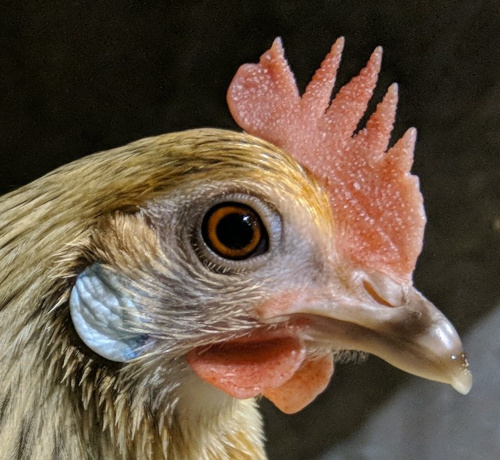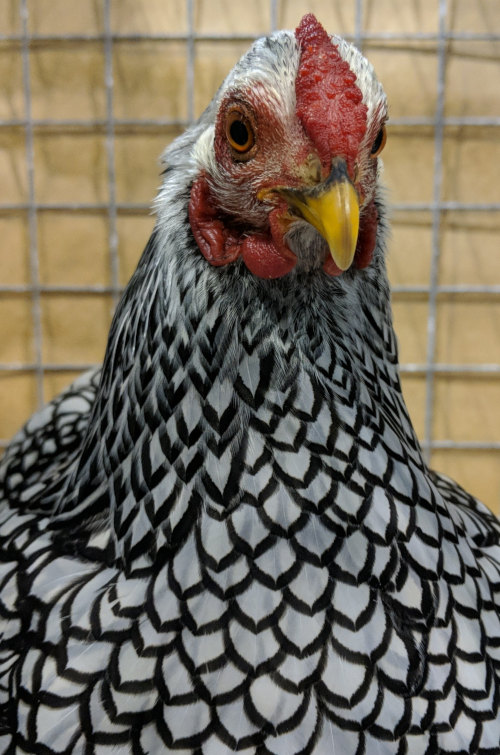Selecting chickens for breeding. What to look for and some do's and don'ts.

Over the years I have successfully bred hens for show as well as birds for meat.
Table of Contents
- How do you pick and choose the best birds to breed from?
- How I select chickens for breeding:
- What Makes Good Egg Layers?
- What makes good broilers or meat chickens?
- What to look for in show chickens?
- How old should chickens be for breeding stock:
- How many chickens should a beginner start breeding with?
- When is chicken breeding season?
- Are some types of chickens easier for backyard keepers to breed?
- How long does it take to breed a chicken?
- What does F1, and F2 mean in chickens?
- Why are chickens selectively bred?
- Where to buy breeding stock and how much to pay for it:
How do you pick and choose the best birds to breed from?
Chicken breeding is the process of finding suitable mates and penning them up together to produce the desired offspring.
Chickens are chosen for breeding because they are the best examples , they must be good egg producers, convert feed to meat easily and conform the the standards of perfection for the breed.
Below: A stunning show chicken.
It easy to breed chickens but to do it correctly so as to produce better chicks takes time and skill.
How I select chickens for breeding:
My chicken keeping mentor gave me a few rules to use when selecting breeding stock:
- Never choose any bird for breeding that has been ill in the last 12 months.
- Always pick vigorous chickens that are active and mobile.
- Chickens chosen for breeding should be symmetrical down their centre line.
- Select birds that have the right body size, shape and type.
- Breeders must be free from defects and fatal genes.
- Birds must have a good temperament.
- Chickens chosen for breeding stock must be the best representatives of their breed, based on the breed standard.
I have used trap-nesting in the past so as I know exactly which hens are producing which eggs.
Below: When choosing chickens for breeding make sure the eyes are bright and clear, the ears and nostrils are clean and the comb is the correct size and shape for the breed.

Selecting hens is more important for egg colour as that seems to follow the female line.
I think that selecting roosters is I think more important than hens, the rooster can mate with many hens and will imprint his genetics on far more chicks than a hen will.
What Makes Good Egg Layers?
Good egg layers are chickens that lay a lot of eggs on little feed. The normally have quite low body weight and are of average size.
It takes food to keep a large and heavy hen and the smaller birds are more thrifty.
Important characteristics to look for in egg laying hens:
- Laying frequency,
- Quick to mature to point of lay,
- Good egg size with low numbers of shell deformities,
- Reproductive lifespan
- Feed efficiency.
With egg layers you do not want hens that are large, heavy or regularly broody.
What makes good broilers or meat chickens?
Broilers or meat chickens are selected for their ability to put meat on quickly for the least amount of feed.
Important characteristics to look for when choosing meat chicken breeding stock:
- Good size with well developed muscle.
- Good feed to weight gain ratio.
- Good looking carcass.
- A good meat to bone ratio.
- Good taste and texture has as much to do with raising techniques and feed as genetics.
- Calm temperament.
- Reasonable egg numbers.
What to look for in show chickens?
Show chickens are held to exacting standards and you should get to know your breed.
Below: Make sure the feathering is accurate. Combs have to exact and the number of points is often limited.

A quiet calm nature is required in show chickens and they need to be fine with being handled.
How old should chickens be for breeding stock:
Chickens should breeding stock should be between 1 and 4 years of age as it is difficult to assess young birds properly.
I never breed from chickens younger than 1 year as they have not fully matured and some things only show after a first moult.
Below: This brassiness in the feathers of this white leghorn show much more clearly after the first full moult.

A chickens first season is used to test its fertility, personality, productivity and compliance to the breed standards before being used to breed.
How many chickens should a beginner start breeding with?
Selective breeding is munch more accurate than large flock mating. You can keep track of the offspring and lineage much more easily.
You will need at least 3 pairs to make a start as a chicken breeder.
When is chicken breeding season?
Chickens can breed all year but conditions and fertility are better in spring and summer.
The best time to breed chickens is during spring. I never breed birds before the 1st of March and never hatch chicks after the end of August.
Fertility peaks amongst birds as the days begin to lengthen beyond 12 hours of daylight which here in the UK is towards the end of February.
Are some types of chickens easier for backyard keepers to breed?
Most chickens are easy to breed but a few are more difficult because of some of the characteristics.
Breeds beginners should avoid are:
- Some chickens have fertility problems like the Cornish.
- Those that need to be double mated.
- Very flighty birds that may get into other breeding pens.
- Birds that contain well known lethal genes like the Japanese bantam.
One of the easiest chickens to breed is the Silkie, most of the characteristics like the blue skin and the fluffy feathers are dominant.
Below: Silkies are a good choice for the novice breeder, easy to look after with many dominant traits.
How long does it take to breed a chicken?
Becoming a chicken a chicken breeder takes patience.
To successfully raise a generation of chickens takes 31 weeks. Cockerels need to be in with the hens for 2 weeks before eggs are collected and then it takes 3 weeks to incubate and hatch them.
Timescale for breeding chickens:
| Activity. | Time taken. |
| Collecting fertile eggs. | 2 weeks. |
| Incubating | 3 weeks. |
| Raising to point of lay | 16 weeks. |
| Maturity | 26 weeks. |
Chickens then need to be raised on for at least 26 weeks before they are able to produce fertile eggs again.
What does F1, and F2 mean in chickens?
The F numbers like F1, F2 are used to denote generations in chicken breeding.
F is the parents, F1 is the first generation, F2 is the second, F3 is the third and so on.
Why are chickens selectively bred?
Chickens are selectively bred to accentuate the good characteristics and remove the bad.
The risks of selective breeding is that a poor choice can fix a fault or genetic condition and ruin a line of chickens.
Where to buy chickens for breeding stock and how much to pay for them:
Good quality breeding chickens are both expensive and hard to come by.
I bought a trio of Barnevelders a few years ago and paid £240 ($330). The advantage of buying chickens like this is they have been tested fertile and you know they will produce.
When you buy show or quality chickens for breeding you can expect to pay $10 (£7) each for hatching eggs, $25 (£19) for day old chicks and $100 (£70) each for Point of lay birds.
Rarer and fully mature or tested birds will be more expensive still.
You can buy breeding stock from :
- Private breeders.
- Auctions.
- Specialist breed Facebook groups.
- Specialist websites.
Buying hatching eggs from eBay is unlikely to give you the results you are after.
